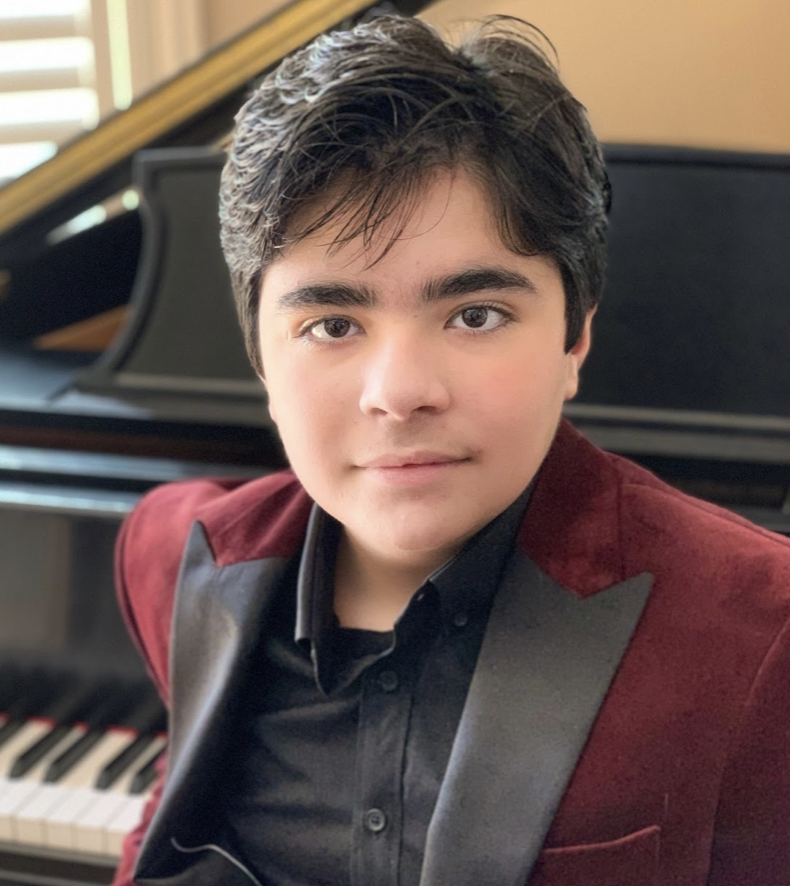|
Symphony
FROM THE NEW WORLD TO THE OLD WORLD
by Peter Lert
Saturday, June 14, 2025
Chamber
MC2 DUO RECITAL CLOSES 222'S SEASON
by Terry McNeill
Saturday, June 14, 2025
Choral and Vocal
CANTIAMO SONOMA'S LUSCIOUS A CAPELLA SINGING IN SEASON ENDING CONCERT
by Pamela Hicks Gailey
Sunday, June 8, 2025
Symphony
SRS SEASON ENDS WITH RESOUNDING TA-TA-TA-BANG
by Terry McNeill
Sunday, June 1, 2025
Symphony
YOUTHFUL VIRTUOSITY ON DISPLAY AT USO'S MAY CONCERTS
by Peter Lert
Saturday, May 17, 2025
Symphony
MYSTICAL PLANETS AND LIVELY GERSHWIN ORTIZ AT FINAL SRS CONCERT
by Peter Lert
Sunday, May 4, 2025
Symphony
VSO'S CONCERT MUSIC OF TIME, MUSIC OF PLACE
by Peter Lert
Sunday, April 27, 2025
VOCAL ELEGANCE AND FIRE AT THE 222'S RECITAL APRIL 26
by Pamela Hicks Gailey
Saturday, April 26, 2025
CANTIAMO SONOMA SINGS AN INSPIRED GOOD FRIDAY MOZART REQUIEM CONCERT
by Pamela Hicks Gailey
Friday, April 18, 2025
DRAMATIC SHOSTAKOVICH SYMPHONY CLOSES PHILHARMONIC'S 25TH SEASON
by Terry McNeill
Sunday, April 13, 2025
|
 |
 Pianist Connor Roham |
SPARKLING PONCHIELLI AND IMPOSING SCHUMAN AT SO CO PHIL CONCERT
by Terry McNeill
Saturday, November 12, 2022
What’s a surefire opening work for a symphony concert? A Rossini overture? Bernstein’s Candide? Gershwin? The Sonoma County Philharmonic’s opener Nov. 12 hit a home run with the sprightly Dance of the Hours from Act Three of Ponchielli’s Opera La Gioconda.
The 10-minute work featured harpist Christina Goodwin and the moderate tempo allowed the Orchestra to make the most of the many short pauses, soft attacks and then the jump to snazzy circus-like motives. Written in 1880 the short ballet music received ecstatic applause from the Jackson Theater audience, and perhaps conductor Norman Gamboa had the rare thought of a reprise, but stayed with the program and turned to Beethoven’s C Minor Piano Concerto, Op. 37, with soloist Connor Roham.
Everything was in its place in the Concerto, the composer’s third and written in 1803. Ragged string attacks in the opening Allegro receded as Mr. Roham joined the mix, his scale playing all evening lithe and showcasing the piano’s lovely top register. Trills were always even and connecting with Mr. Gamboa’s phrasing from the podium the many trills led seamlessly to subsequent themes. It was a workmanlike beginning movement, but the soloist’s phrasing was too often wooden and lacked much individuality and shape.
More personality was heard in the appealing Largo as Mr. Roham played off warm solos from the flutes (Debra Scheuerman and Valerie White), horns and bassoonists Mary Ann Sacksteder and Steven Peterson.
The finale was well played, agogics and accents smoothly a part of the pianist’s interpretation, but I kept wishing for more repose and singularity in the phrasing. Mr. Gamboa fashioned an alluring string fugue near the end of the 34-minute Concerto.
Mr. Roham received strong applause and proceeded to play two Chopin Mazurkas encores, the most effective being the Op. 63, No. 2 in A Flat, with off-beat accents. There was a time, maybe now 30 years ago, when encores after a concerto were verboten. How things have changed. At intermission the pianist received a plaque as winner of the Philharmonic’s Brian Lloyd Piano Competition. Lloyd was in the cello section for many years, a Philharmonic President and a seminal humanitarian and musical scholar.
Schumann’s C Major (the Second) Symphony, Op. 61, completed the program, the strings in the extended slow introduction again scrappy in early attacks but quickly settled down. Balances throughout this wonderful Symphony were difficult as strong brass (two each trumpet/horn/trombone) and woodwind sound tended to cover the eight violins.
Mr. Gamboa controlled well the scary demands of the fast tempo in the Scherzo, backing a tad off the written tempo, and encouraging rich clarinet solo playing from Mary Kruzas. A highlight of the performance was the Adagio’s heart-stopping beauty, poignant and melodic, and in ways mysterious.
The energetic finale found themes being handed from violin to violas to cellos to basses in a slow march, leavened by the oboe’s lyric melody and solos in the flutes. There were many tempos changes that Mr. Gamboa shaped with care, as he did with the sonic buildup that was full of running scales and powerful tympani, a gesture of triumph.
|

